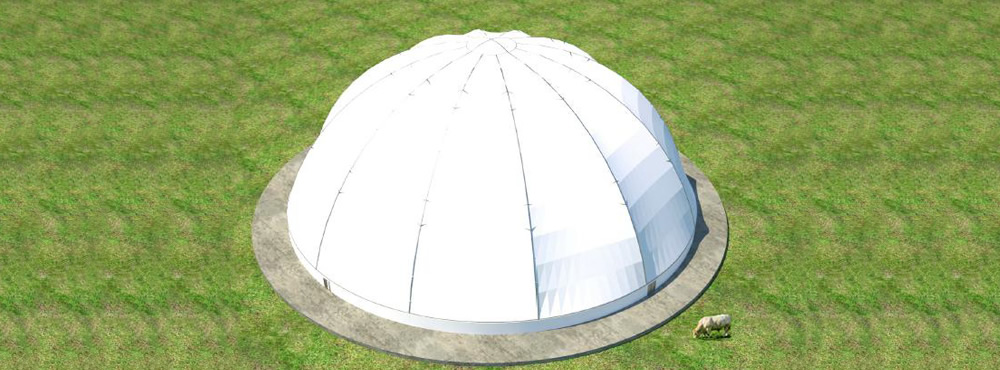
Thomas Murphy FRIAI, Murphy Inventions Limited’s CEO
1. Why this type of structure is called Dome?
It is called The DOME because of its shape and purpose. Domes are large span structures, economical and quick to establish. They encompass a big environmental zone and through this shape will ensure that the vast majority of methane and CO2 produced by the housed ruminants through belching and flatulence, can be trapped and collected at the highest point. The methane content in the air at ground level is C. 2% but as the heated exhaled air rises its methane concentration enriches and this mixture will be easier to separate from the air gases and CO2. The Dome shape is deliberate - its lower ground surface area is greatest to facilitate fresh air turnover ensuring required air cycles are adhered to. The Dome shape has many enhanced benefits over conventional indoor farming relevant to animal husbandry, feed distribution, monitoring and quality of produce.
2. How long have you been studying the technique of capture of the CO2 and CH4?
We started on the project in November 2008. MIL is trying to provide a better platform for methane capture in the Dome. The science of methane extraction needs considerable updating and involvement by major Companies worldwide, before climate change gets out of hand. The Dome is at Feasibility stages and preparing for prototype development.
3. In which countries is the technique already used? What are the results?
The Dome is completely novel and innovative for use of methane capture. There are no known examples of airborne methane extraction presently. We do not have a choice, a solution must be found, whatever the initial cost. The closest present day example are Biodomes (Glass House Spheroids) where the plants are effectively kept at optimum temperatures, reducing water requirements, whilst increasing crop yields.
MIL’s Ruminant Dome will provide the best environment for the ruminants, feed them properly, remove and treat their waste products in a sustainable manner, reduce unnecessary antibiotics and capture the airborne methane and CO2. Domes will ensure the release of up to 2/3rds of the land for alternative types of farming and purposes.
This will be a ‘giant leap’ for agriculture globally.
4. What is your opinion about the partnerships between Brazilian companies that are promoted by Low Carbon Brazil?
Brazilian Companies, from our experience, are more willing to work together for the betterment of the planet. This is a fantastic opportunity to develop mutual business opportunities on both sides of the Atlantic Ocean. The Brazilian Companies we have teamed up with to develop this project are highly proficient in their specific expertise and are most suitable to lead out this very sustainable project. They see the concepts raised in Low Carbon as opening the world stage door for Brazil. Brazil has 230 million ruminants; if they achieve their enthusiastic goals Brazil can lead the world in low carbon sustainable technology developments of the future.

Mr Marcus Andrey Vasconcelos, Chairman of the CO2 Zero Institute
1. Why “The Dome” has demonstrated to be efficient for the Brazilian reality?
Brazil has one of the largest herds in the universe of dairy cattle, and The Dome fits like a glove, because in addition to capturing and packaging (placing in cylinders) methane gas and CO2, since the rumination of animals generate up to 80% more of those kinds of gases than manure, it will also generate electric power to farms that face high energy costs for that kind of confinement. Due to the thermal comfort provided to animals through this new technology, dairy productivity is also significantly boosted.
2. How will the CO2 Zero Institute act in the project?
The CO2 Zero Institute’s role will be to map dairy farms, present the technology, and develop in cooperation with Murphy Inventions’ technical team the basic/executive projects, and finally develop the MDL/S – Clean/Sustainable Development Mechanism project for carbon credit generation.
3. Has any other of your projects been selected by Low Carbon Brazil? How to you see this European Union initiative?
Another project developed by the CO2 Zero Institute has also been selected by the program, relying on a new renewable energy technology developed in partnership with Bulgarian company Solery, and which will bring to Brazil a thermovoltaic power technology that in addition to generating energy also heats water using the same system, and can be applied in many instances, from homes to industries, such as the textile sector, which requires hot water to dye fabrics, and so we believe it will be a huge success.